Irina Nikishina
Do I look like a `cat.n.01` to you? A Taxonomy Image Generation Benchmark
Mar 13, 2025Abstract:This paper explores the feasibility of using text-to-image models in a zero-shot setup to generate images for taxonomy concepts. While text-based methods for taxonomy enrichment are well-established, the potential of the visual dimension remains unexplored. To address this, we propose a comprehensive benchmark for Taxonomy Image Generation that assesses models' abilities to understand taxonomy concepts and generate relevant, high-quality images. The benchmark includes common-sense and randomly sampled WordNet concepts, alongside the LLM generated predictions. The 12 models are evaluated using 9 novel taxonomy-related text-to-image metrics and human feedback. Moreover, we pioneer the use of pairwise evaluation with GPT-4 feedback for image generation. Experimental results show that the ranking of models differs significantly from standard T2I tasks. Playground-v2 and FLUX consistently outperform across metrics and subsets and the retrieval-based approach performs poorly. These findings highlight the potential for automating the curation of structured data resources.
Self-Taught Self-Correction for Small Language Models
Mar 11, 2025Abstract:Although large language models (LLMs) have achieved remarkable performance across various tasks, they remain prone to errors. A key challenge is enabling them to self-correct. While prior research has relied on external tools or large proprietary models, this work explores self-correction in small language models (SLMs) through iterative fine-tuning using solely self-generated data. We introduce the Self-Taught Self-Correction (STaSC) algorithm, which incorporates multiple algorithmic design choices. Experimental results on a question-answering task demonstrate that STaSC effectively learns self-correction, leading to significant performance improvements. Our analysis further provides insights into the mechanisms of self-correction and the impact of different design choices on learning dynamics and overall performance. To support future research, we release our user-friendly codebase and lightweight models.
Argument-Based Comparative Question Answering Evaluation Benchmark
Feb 20, 2025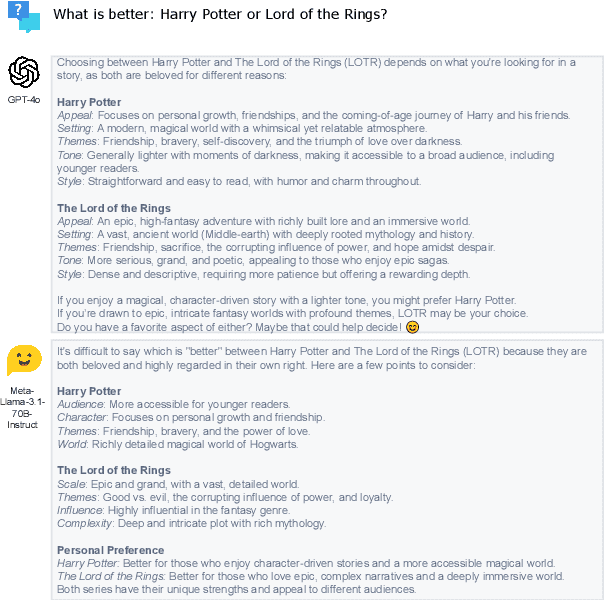
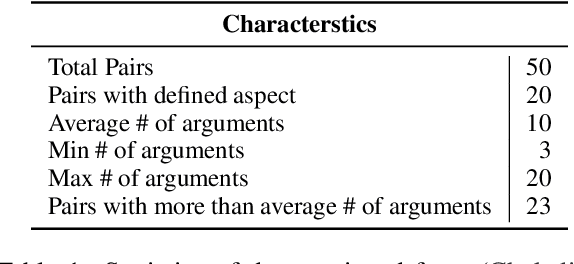
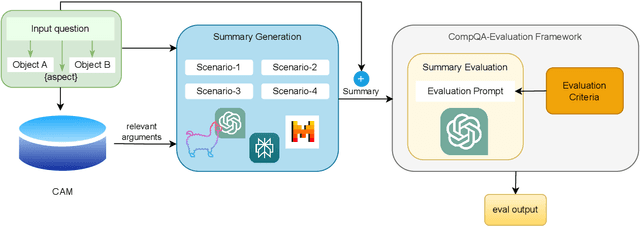

Abstract:In this paper, we aim to solve the problems standing in the way of automatic comparative question answering. To this end, we propose an evaluation framework to assess the quality of comparative question answering summaries. We formulate 15 criteria for assessing comparative answers created using manual annotation and annotation from 6 large language models and two comparative question asnwering datasets. We perform our tests using several LLMs and manual annotation under different settings and demonstrate the constituency of both evaluations. Our results demonstrate that the Llama-3 70B Instruct model demonstrates the best results for summary evaluation, while GPT-4 is the best for answering comparative questions. All used data, code, and evaluation results are publicly available\footnote{\url{https://anonymous.4open.science/r/cqa-evaluation-benchmark-4561/README.md}}.
Wiping out the limitations of Large Language Models -- A Taxonomy for Retrieval Augmented Generation
Aug 07, 2024
Abstract:Current research on RAGs is distributed across various disciplines, and since the technology is evolving very quickly, its unit of analysis is mostly on technological innovations, rather than applications in business contexts. Thus, in this research, we aim to create a taxonomy to conceptualize a comprehensive overview of the constituting characteristics that define RAG applications, facilitating the adoption of this technology in the IS community. To the best of our knowledge, no RAG application taxonomies have been developed so far. We describe our methodology for developing the taxonomy, which includes the criteria for selecting papers, an explanation of our rationale for employing a Large Language Model (LLM)-supported approach to extract and identify initial characteristics, and a concise overview of our systematic process for conceptualizing the taxonomy. Our systematic taxonomy development process includes four iterative phases designed to refine and enhance our understanding and presentation of RAG's core dimensions. We have developed a total of five meta-dimensions and sixteen dimensions to comprehensively capture the concept of Retrieval-Augmented Generation (RAG) applications. When discussing our findings, we also detail the specific research areas and pose key research questions to guide future information system researchers as they explore the emerging topics of RAG systems.
Low-Resource Machine Translation through the Lens of Personalized Federated Learning
Jun 18, 2024



Abstract:We present a new approach based on the Personalized Federated Learning algorithm MeritFed that can be applied to Natural Language Tasks with heterogeneous data. We evaluate it on the Low-Resource Machine Translation task, using the dataset from the Large-Scale Multilingual Machine Translation Shared Task (Small Track #2) and the subset of Sami languages from the multilingual benchmark for Finno-Ugric languages. In addition to its effectiveness, MeritFed is also highly interpretable, as it can be applied to track the impact of each language used for training. Our analysis reveals that target dataset size affects weight distribution across auxiliary languages, that unrelated languages do not interfere with the training, and auxiliary optimizer parameters have minimal impact. Our approach is easy to apply with a few lines of code, and we provide scripts for reproducing the experiments at https://github.com/VityaVitalich/MeritFed
TaxoLLaMA: WordNet-based Model for Solving Multiple Lexical Sematic Tasks
Mar 14, 2024Abstract:In this paper, we explore the capabilities of LLMs in capturing lexical-semantic knowledge from WordNet on the example of the LLaMA-2-7b model and test it on multiple lexical semantic tasks. As the outcome of our experiments, we present TaxoLLaMA, the everything-in-one model, lightweight due to 4-bit quantization and LoRA. It achieves 11 SotA results, 4 top-2 results out of 16 tasks for the Taxonomy Enrichment, Hypernym Discovery, Taxonomy Construction, and Lexical Entailment tasks. Moreover, it demonstrates very strong zero-shot performance on Lexical Entailment and Taxonomy Construction with no fine-tuning. We also explore its hidden multilingual and domain adaptation capabilities with a little tuning or few-shot learning. All datasets, code, and model are available online at https://github.com/VityaVitalich/TaxoLLaMA
Large Language Models Meet Knowledge Graphs to Answer Factoid Questions
Oct 03, 2023Abstract:Recently, it has been shown that the incorporation of structured knowledge into Large Language Models significantly improves the results for a variety of NLP tasks. In this paper, we propose a method for exploring pre-trained Text-to-Text Language Models enriched with additional information from Knowledge Graphs for answering factoid questions. More specifically, we propose an algorithm for subgraphs extraction from a Knowledge Graph based on question entities and answer candidates. Then, we procure easily interpreted information with Transformer-based models through the linearization of the extracted subgraphs. Final re-ranking of the answer candidates with the extracted information boosts Hits@1 scores of the pre-trained text-to-text language models by 4-6%.
RuArg-2022: Argument Mining Evaluation
Jun 18, 2022
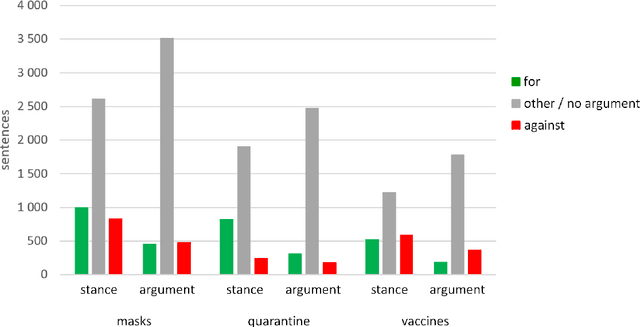
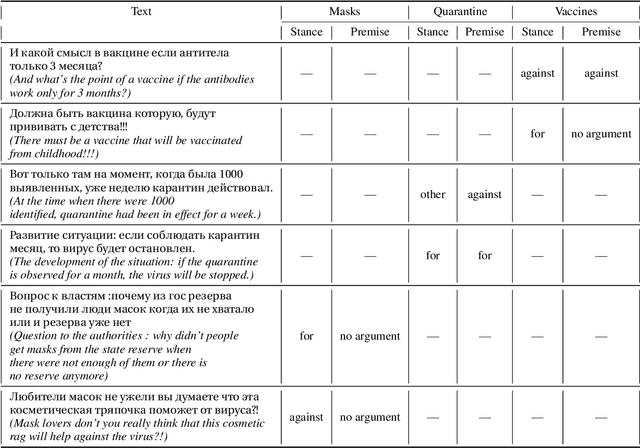
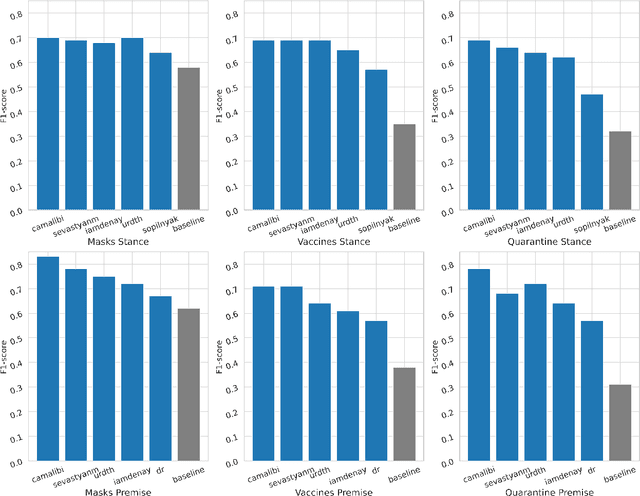
Abstract:Argumentation analysis is a field of computational linguistics that studies methods for extracting arguments from texts and the relationships between them, as well as building argumentation structure of texts. This paper is a report of the organizers on the first competition of argumentation analysis systems dealing with Russian language texts within the framework of the Dialogue conference. During the competition, the participants were offered two tasks: stance detection and argument classification. A corpus containing 9,550 sentences (comments on social media posts) on three topics related to the COVID-19 pandemic (vaccination, quarantine, and wearing masks) was prepared, annotated, and used for training and testing. The system that won the first place in both tasks used the NLI (Natural Language Inference) variant of the BERT architecture, automatic translation into English to apply a specialized BERT model, retrained on Twitter posts discussing COVID-19, as well as additional masking of target entities. This system showed the following results: for the stance detection task an F1-score of 0.6968, for the argument classification task an F1-score of 0.7404. We hope that the prepared dataset and baselines will help to foster further research on argument mining for the Russian language.
Taxonomy Enrichment with Text and Graph Vector Representations
Jan 21, 2022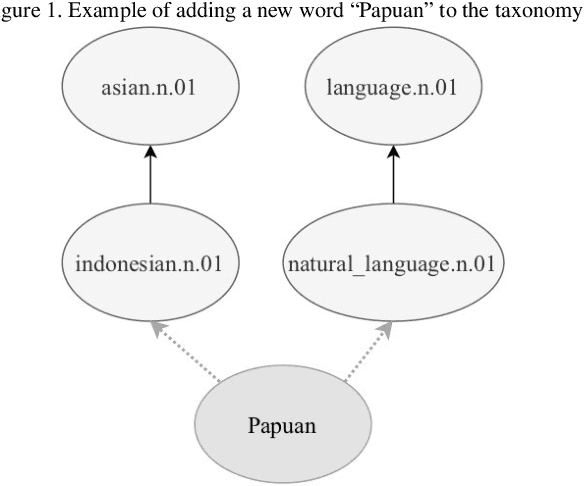
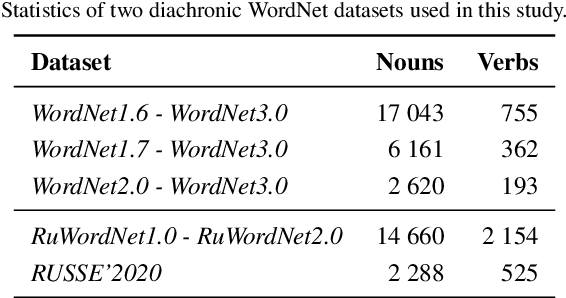
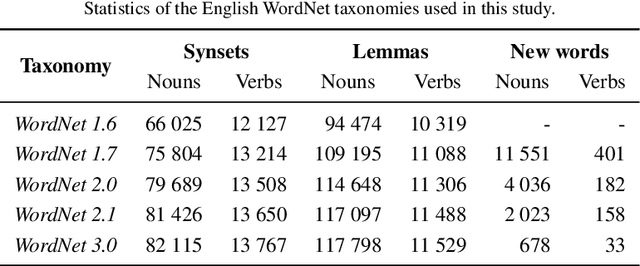
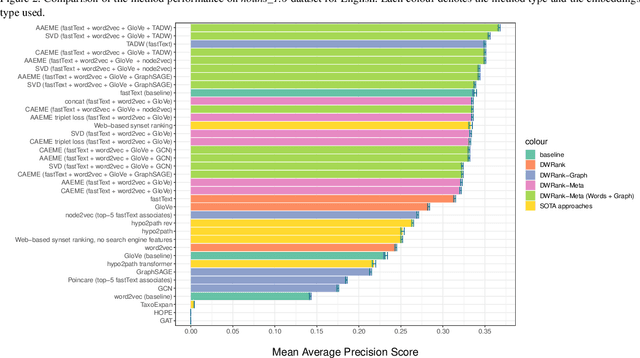
Abstract:Knowledge graphs such as DBpedia, Freebase or Wikidata always contain a taxonomic backbone that allows the arrangement and structuring of various concepts in accordance with the hypo-hypernym ("class-subclass") relationship. With the rapid growth of lexical resources for specific domains, the problem of automatic extension of the existing knowledge bases with new words is becoming more and more widespread. In this paper, we address the problem of taxonomy enrichment which aims at adding new words to the existing taxonomy. We present a new method that allows achieving high results on this task with little effort. It uses the resources which exist for the majority of languages, making the method universal. We extend our method by incorporating deep representations of graph structures like node2vec, Poincar\'e embeddings, GCN etc. that have recently demonstrated promising results on various NLP tasks. Furthermore, combining these representations with word embeddings allows us to beat the state of the art. We conduct a comprehensive study of the existing approaches to taxonomy enrichment based on word and graph vector representations and their fusion approaches. We also explore the ways of using deep learning architectures to extend the taxonomic backbones of knowledge graphs. We create a number of datasets for taxonomy extension for English and Russian. We achieve state-of-the-art results across different datasets and provide an in-depth error analysis of mistakes.
Studying Taxonomy Enrichment on Diachronic WordNet Versions
Nov 23, 2020



Abstract:Ontologies, taxonomies, and thesauri are used in many NLP tasks. However, most studies are focused on the creation of these lexical resources rather than the maintenance of the existing ones. Thus, we address the problem of taxonomy enrichment. We explore the possibilities of taxonomy extension in a resource-poor setting and present methods which are applicable to a large number of languages. We create novel English and Russian datasets for training and evaluating taxonomy enrichment models and describe a technique of creating such datasets for other languages.
 Add to Chrome
Add to Chrome Add to Firefox
Add to Firefox Add to Edge
Add to Edge